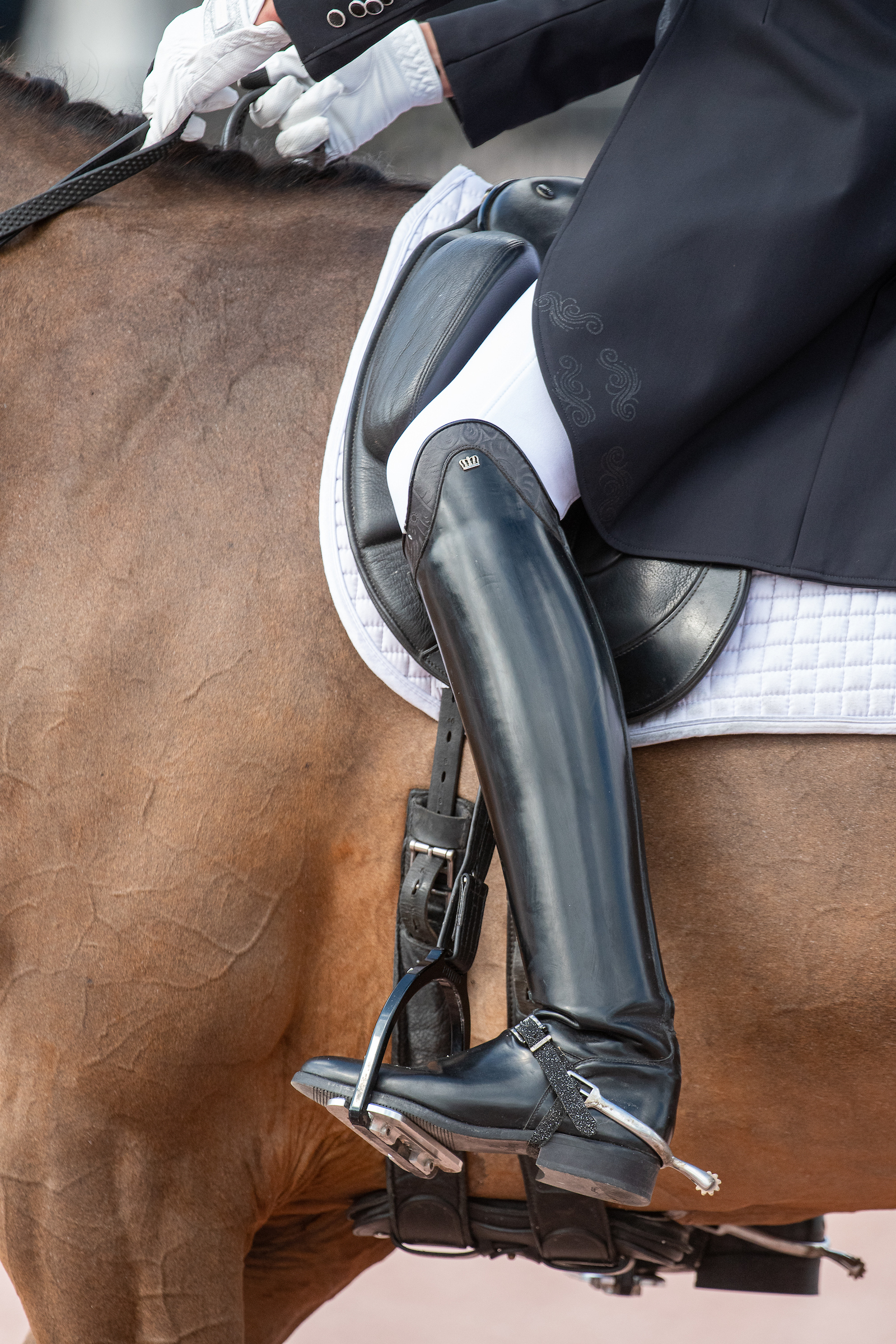Q: I have the problem of loose lower legs even though I am quite physically fit. I have been trying to stabilize my lower leg but without much success. What causes the leg to be loose, and what can I do to attain lower-leg stability? It’s a fault I’d dearly love to leave behind.—Name withheld by request
A: The problem you have described is a common one. Dressage horses are prized for big movement, but that movement presents quite a few challenges for the rider who must develop the ability to maintain her balance by way of an independent, secure position while following the movement of the horse, then ultimately be able to influence him to go straight and forward with seat, leg and rein aids.

My first impression upon reading your question is that you are most likely leaning back too far in order to either maintain balance or drive your horse forward. When you lean back, it causes your horse to fall onto his forehand. It disrupts his natural balance, and his hind legs actually push away from his center of gravity instead of toward it. He stiffens his back and his gaits become jarring and hard to sit. To compensate, you most likely round your back, roll your shoulders, drop your chin and your hands are naturally drawn back. Since your horse’s hind legs are not coming forward, your legs do not get “filled up” by the horse’s movement and they start to flop.
Another reason your lower leg is flopping might be due to clamping with your knees in order to try to stay in balance with your horse. When that happens, your hips tighten and prohibit you from being able to follow your horse’s movement. That, in turn, encourages him to tighten his back, which makes it even more difficult for you to stabilize your position.
The best way to address this problem is on the longe line. Regardless of how good and fit a rider you are, being longed while a qualified instructor analyzes your base position is critical. That person can make sure you are sitting straight and relaxed while watching for any tendencies toward tension or crookedness. The instructor can control the pace of the horse while you focus on a deep seat, erect posture and a long leg.
When I longe a student, I take the time to correctly position her before she even moves off. I take away the reins. I emphasize her carrying her head above her shoulders, eyes up, back flat, elbows down, seat bones down, legs long and heels down. The rider must concentrate on maintaining contact with the calves along the sides of the horse without gripping or clamping with her knees. I have the rider do simple exercises with different parts of her body to make her aware that she can do so without affecting other parts. This all helps to develop the all-important independent seat. Circling the ankles, raising one leg then the other, lifting the legs simultaneously off the horse and holding for a second or two before returning them to the proper position, dropping the chin and accentuating a collapsed back then coming right again—these are beneficial exercises and are eventually done in all three gaits.
The added bonus of the longe-line work is that you get the feel of a straight horse traveling through your legs and seat. A straight horse actually fills up your legs and gives you a comfortable place to sit. The instructor can determine what exercises may be suitable for specific problems. He can also vary the pace within the gaits so you can learn to follow your horse’s movements while maintaining proper balance.
Once you get the feel of a straight horse and how to recognize when you are sitting correctly, it is time to try to reproduce that feeling off the longe line. Ride accurate circles and straight lines. Work hard to carry your head above your shoulders, keep your eyes up and focus on a destination. Do many transitions from trot to walk and back to trot again without leaning back. Incorporate shallow leg yields and turns on the forehand throughout your ride to remind yourself that both your legs should always be laying gently against your horse’s sides.
Rebecca Langwost-Barlow is a U.S. Dressage Federation (USDF) gold medalist and Certified Instructor through Fourth Level. She trained in Germany with the late Olympian Dr. Reiner Klimke and Rolf Isselhorst.











